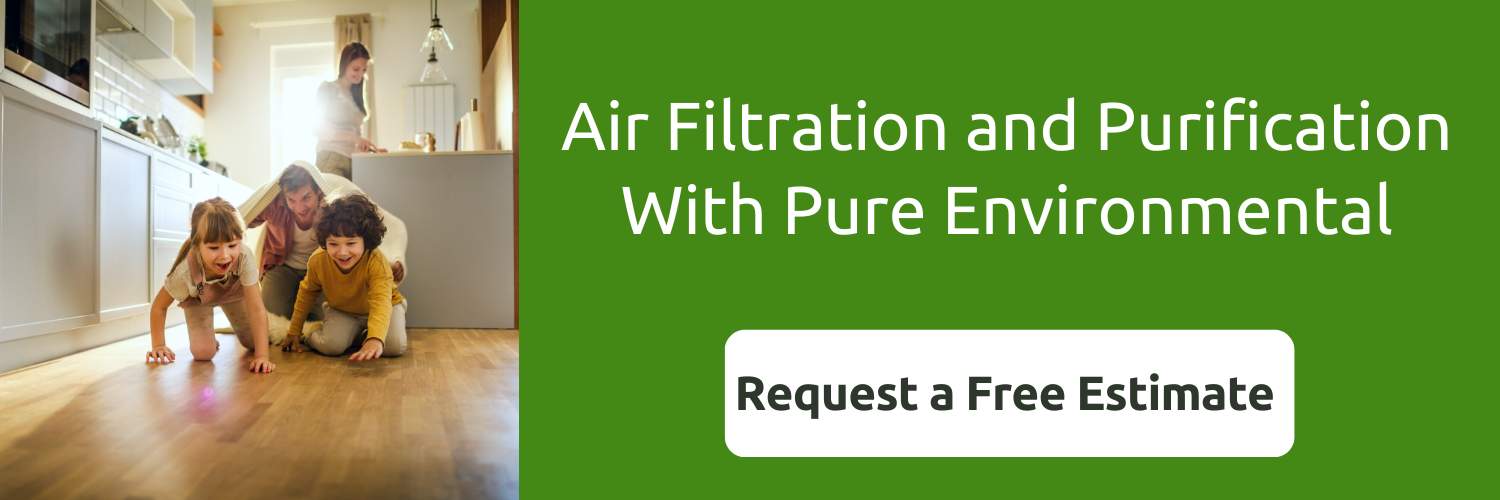With the growing number of wildfires and record heat around the world, people are spending more and more time indoors.
It’s no surprise many are worried about the quality of their indoor air.
Whether it’s for environmental, health, or odor reasons, air purifiers may be the solution to your air quality concerns.
Still, some may struggle with the follow-up question, asking themselves, “But how many air purifiers do I need?”
The answer may be trickier than you’d expect, but we’ll help you get to the bottom of it.
Stay tuned as we dive into the details of air purifiers and how you can determine exactly how many air purifiers you need for your space.
Table of Contents
- How Many Air Purifiers Do I Need?
- Do I Need an Air Purifier in Every Room?
- 3 Factors That Determine How Many Air Purifiers You Need
- It All Comes Down to “Air Changes per Hour”
- What Are Air Changes per Hour in Air Filtration?
- Why Do Air Changes per Hour Matter in Air Filtration?
- Common ACH Rates By Building Type
- 2 Methods of Calculating the Number of Air Changes per Hour
- Pure Environmental: Air Purification and Filtration Experts from Portland to Seattle
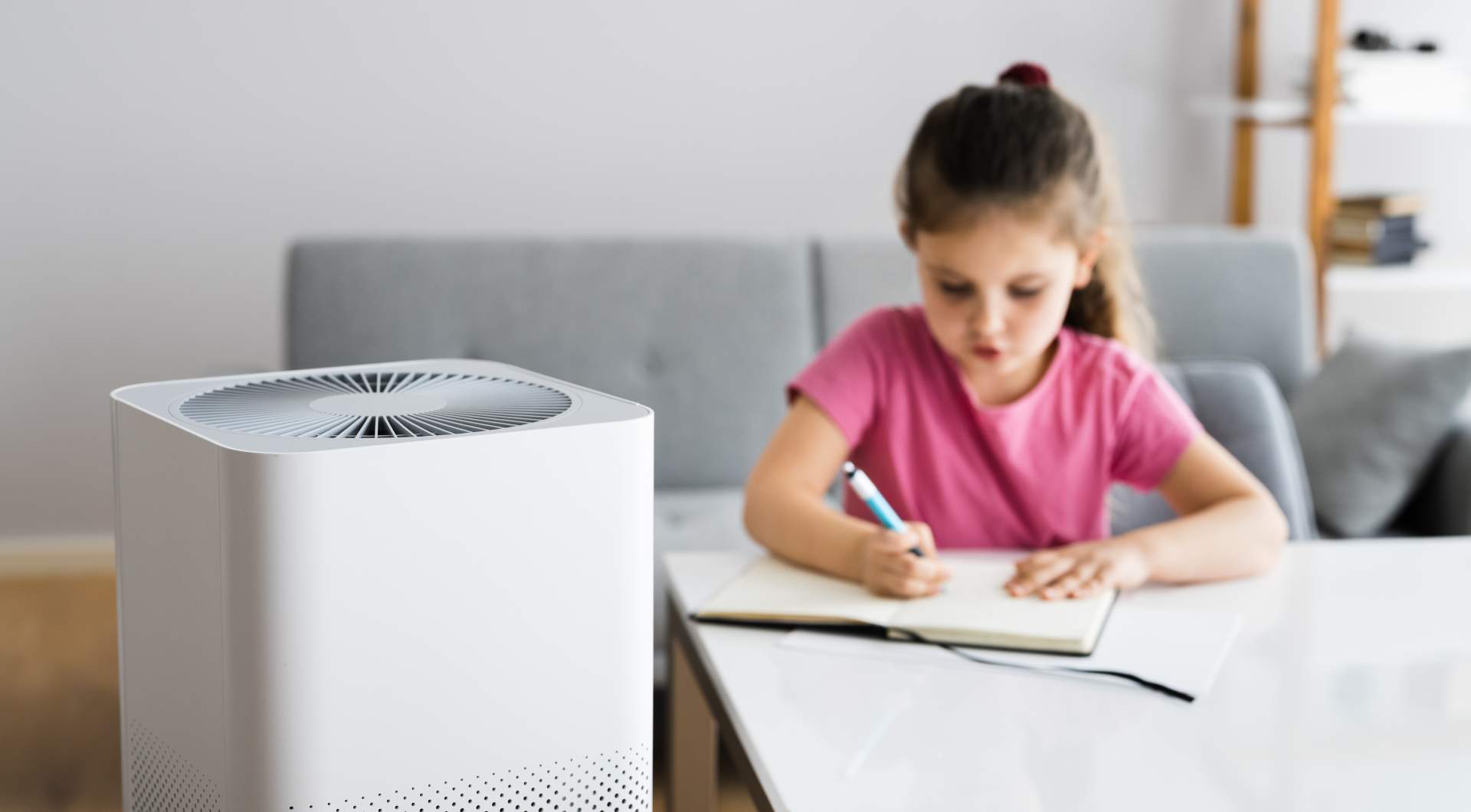
How Many Air Purifiers Do I Need?
Recent studies from the United States Environmental Protection Agency (EPA) have reported that indoor air quality could be two to five times worse than outdoor air quality, leaving many people asking, “How many air purifiers do I need to keep my indoor air clean?”
The answer will depend on several factors such as the size of the room or home, the types of air pollutants and sources you have, the type of air purifier you have, and your desired level of “clean” air.
Air purifiers filter out airborne particulates from stagnant indoor air that can trigger:
- Eye and lung irritation
- Asthma
- Allergies; and
- Other negative health impacts
Air purifiers can also reduce the spread of airborne disease and neutralize unpleasant odors, but to work effectively they must be the right size and type for the area you want to clean.
In Washington State, Pure Environmental works alongside the environmental testing and inspection experts at Hawk Environmental Services to offer on-site solutions for healthy commercial and residential spaces.
If you prefer to leave the quality of the air you breathe up to the professionals, trust Pure Environmental to determine just how many air purifiers you need and employ the right technology to eradicate the problem.
Do I Need an Air Purifier in Every Room?
Only you can attest to your needs for each room in your home.
Whether you need an air purifier in every room will really depend on which rooms are most important to you to have cleaner air in.
If your family spends more time in one area of your home, it may help you to focus on that area.
Concentrate on the rooms with the most traffic, like a family room, rather than rooms that are rarely used, like a guest bedroom or bonus room.
Good spaces to start putting an air purifier in include the living room, bedrooms, kitchen, and home office.
Can I Put More Than One Air Purifier in a Room?
In most cases, the average air purifier is efficient enough to clean the air in a room, just as long as the rate covers the square footage of the room it’s in.
If you have a larger room or your ceiling height is higher than eight feet, you may want to use more than one unit. In that case, strategically place each air purifier for maximum coverage.
To be sure, you can calculate the size of your room in cubic feet, then compare it to the capacity level of the air purifier.
Generally, air purifiers will advertise the room size they are designed for on the packaging.
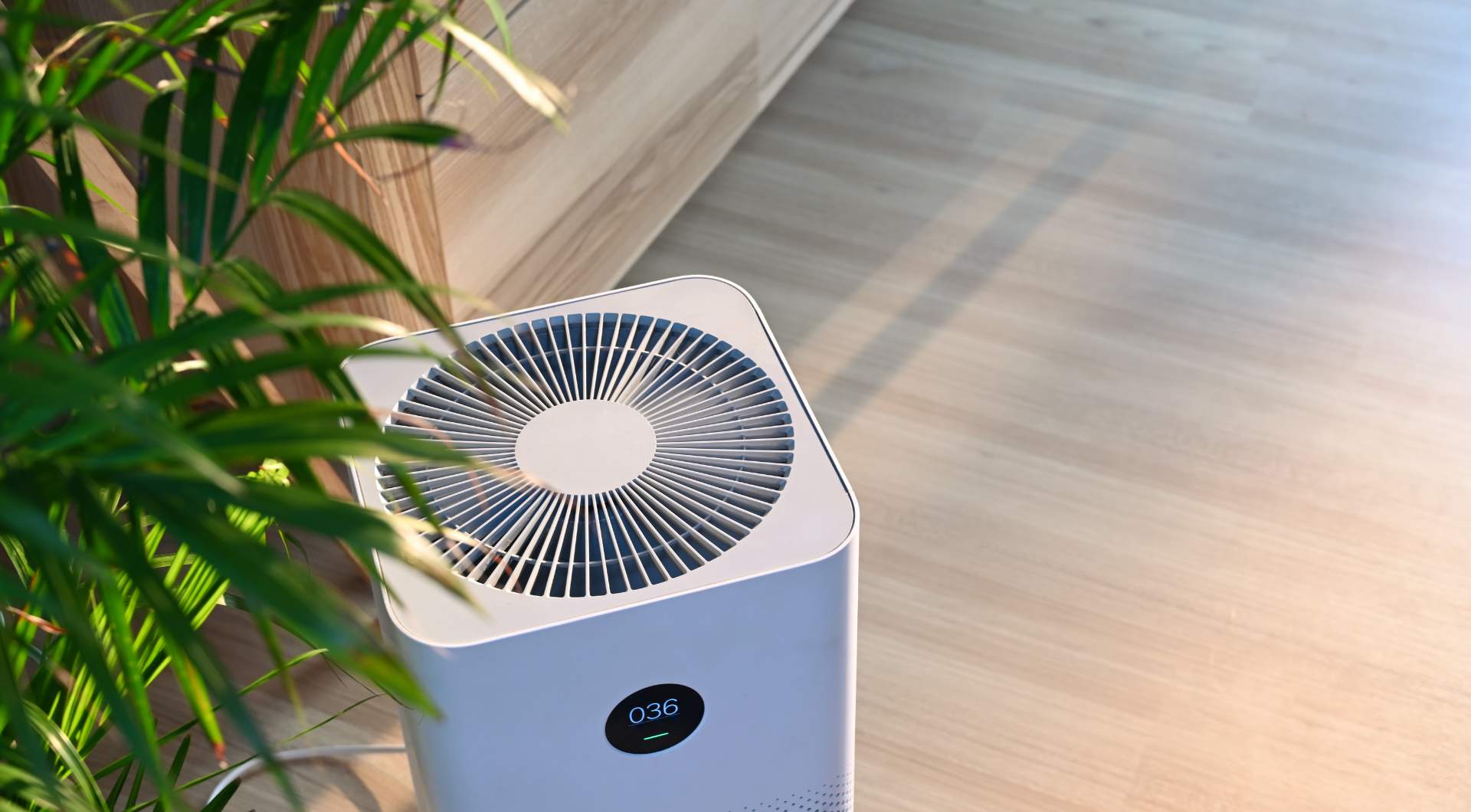
3 Factors That Determine How Many Air Purifiers You Need
#1: Size of Your Home
The size of your home or the rooms you want to use air purifiers in will tell you if one unit will do, or if you need to consider employing more.
If you want to purify your space, you need to calculate the room volume by using this math equation:
Room Length x Room Width x Ceiling Height = Room Volume
If you have a perfectly square room, simply measure one wall and multiply that measurement by itself, then multiply by the ceiling height.
For rectangular rooms, you can measure the long wall and multiply that by the measurement of the shorter wall, then multiply by the ceiling height.
If you have an irregularly shaped room or circular walls, you might have more trouble getting an accurate measurement.
Don’t forget, if your ceiling is higher than eight feet, you’ll need an air purifier rated for a larger space.
#2: Type of Air Purifier
The type of air purifier or the method the unit uses to purify the air can also affect how many units you need.
Your purpose for cleaning the air will determine which type of air purifier can deliver the desired results.
If your main concern is to remove odor from pets, smoke, or chemical fumes, consider an air purifier with a carbon or charcoal filter insert.
A unit that employs a high-efficiency particulate air (HEPA) filter is your best choice if your aim is to rid your air of 99.97% of:
- Dust
- Pollen
- Mold
- Bacteria
- COVID-19; and
- Other airborne particles
Some air purifier options boast a 3-stage filtration system that employs both HEPA and carbon filters to trap microorganisms and destroy odor.
If you have any purifiers with filters, you should be sure to have those filters changed regularly.
#3: Air Flow Patterns
If your home or room has poor air circulation or air flow patterns, you may need to place an additional unit strategically to address a specific area.
Most houses are built to breathe, with air circulating naturally throughout the home.
You may find many basic, affordable units sold at your neighborhood discount store that will work well enough to clean the air in a smaller room with normal air flow patterns.
Pure Environmental can help you keep your home’s air clean and odor-free by adapting your home’s current Heating, Ventilation, and Air-Conditioning (HVAC) system, or implementing a free-standing air purification system powerful enough to address any awkward air flow patterns.
Regardless of your home air filtration needs, we’ve got you covered at Pure Environmental.
It All Comes Down to “Air Changes per Hour”
The number of air purifiers you need really comes down to the amount of air you want to clean or scrub.
If you or someone in your family has respiratory issues, you may want to scrub your air at a faster rate and more often than the minimum level of air changes to be considered “clean.”
What Are Air Changes per Hour in Air Filtration?
The EPA and the American Society of Heating, Refrigerating, and Air-Conditioning Engineers (ASHRAE) recommend that homes receive a minimum of .35 air changes per hour (ACH) to meet indoor air quality standards and minimize adverse health effects.
That means all the air in a room should be exchanged every 3 hours.
ACH is a calculation of how many times per hour the entire volume of air in a given space is replaced with new or recirculated air.
Why Do Air Changes per Hour Matter in Air Filtration?
Sometimes referred to as air change rate or air exchange rate, air changes per hour (ACH) are important in determining if a space is getting adequate ventilation.
According to the EPA, ventilation in an indoor space is key in fighting against the negative health effects of poor indoor air quality, such as:
- Headaches
- Dizziness
- Fatigue
- Respiratory diseases
- Heart disease
- Cancer
- Irritation of the eyes, nose, and throat
ACH will also help you determine which air purifiers and how many you will need for your space.
Common ACH Rates By Building Type
A building’s indoor activity can also cause the space’s ACH rate to vary widely.
If you intend to use an air purifier for an indoor space other than a home, you may want to consider what type of activity is being performed inside the building.
Below you will find a general reference for ACH, provided by Atlantic Environmental, based on building type and common activities.
It’s important to note this reference does not take into account circumstances where air contaminants are involved that may require local exhaust ventilation to capture a chemical, dust, or gas before it enters the building’s air stream.
| Building/Room | Air Change Rate in ACH |
| Auditorium | 8 – 15 |
| Bakeries | 20 – 30 |
| Beauty shops | 6 – 10 |
| Boiler rooms | 15 – 20 |
| Classrooms | 6 – 20 |
| Computer rooms | 15 – 20 |
| Dental centers | 8 – 12 |
| Garages, repair | 20 – 30 |
| Hospital rooms | 4 – 6 |
| Kitchens | 15 – 60 |
| Machine shops | 6 – 12 |
| Malls | 6 – 10 |
| Municipal buildings | 4 – 10 |
| Police stations | 4 – 10 |
| Precision manufacturing | 10 – 50 |
| Shops, paint | 15 – 20 |
| Wood shops | 5 |
| Theaters | 8 – 15 |
| Warehouses | 6 – 30 |
| Waiting rooms, public | 4 |
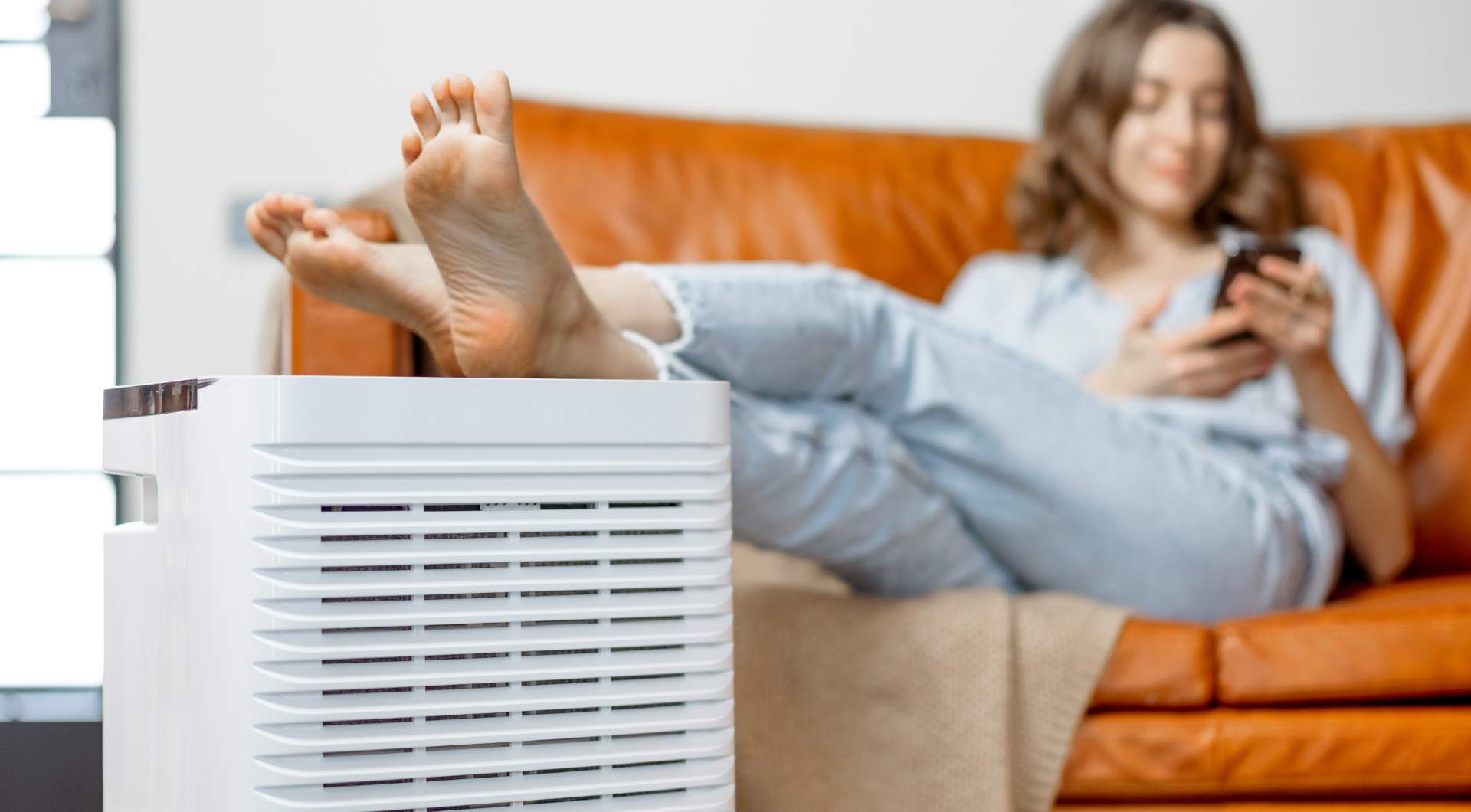
2 Methods of Calculating the Number of Air Changes per Hour To Determine How Many Air Purifiers You Need
#1: Directly Measuring the Air Flow
To figure the ACH you’ll need to find your room volume, which you already learned how to calculate earlier in our guide, and the volume of air in cubic feet per minute (CFM) delivered by the air purifier.
You can probably find the air purifier’s CFM advertised on the packaging, or you can visit the manufacturer’s website to look up your specific model.
With these two figures in hand, you can use this formula, provided by Camfil Clean Air Solutions, to calculate air changes per hour:
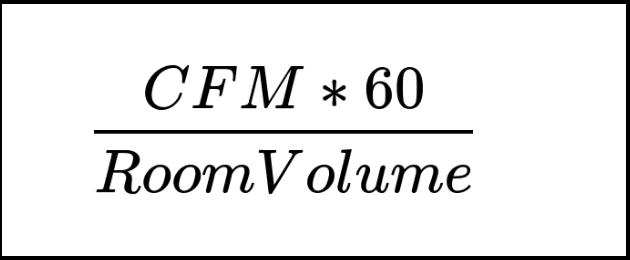
- Take your CFM and multiply it by 60 (minutes) to find how many cubic feet of air your unit will move per hour.
- Divide that number by your cubic feet of room volume.
#2: Using a Tracer Gas
This method is more complicated and involves an industrial hygienist spraying a tracer gas to measure its exhaust to determine the ACH.
The industrial hygienist will use a velometer, thermometer, or vane anemometer to measure the airflow at each exhaust and air supply point, including the local exhausts that may be used to control specific operations.
With these measurements, the tracer gas ACH formula is similar to the airflow ACH formula:
- Take the total air exhaust rate and multiply it by 60 minutes.
- Divide that number by the room volume in cubic feet.
Pure Environmental: Air Purification and Filtration Experts from Portland to Seattle
Studies suggest that people are spending more time indoors than outdoors.
Considering numerous air pollutants and the lack of ventilation, it’s no surprise that indoor air quality can be more polluted than outdoor air.
Take charge of your indoor air quality with Pure Environmental.
Our air purification experts in the Portland and Seattle areas can help you cut through the toughest air quality issues using our PurAyr treatment system.
The cutting-edge PurAyr technology is a powerful air and surface decontamination tool designed to:
- Rapidly and safely pinpoint odors at their source
- Oxidize and neutralize air and surface contaminants
- Dramatically reduce allergens
- Eliminate odors; and
- Improve overall indoor air quality
The best part is –– Pure Environmental uses only environmentally friendly, non-toxic, 100% green technology.
Let Pure Environmental enhance the quality of the air you breathe in your home or office.
Recent posts
- Pros and Cons of Heat Treatment for Bed Bugs: Things To Consider When Reviewing Your Options for Remediation
- How To Get Rid of Pet Odor in Your House
- Clearing the Air: How To Clean Walls From Cigarette Smoke
- Deodorizing Your Living Space: How To Get Rid of a Musty Smell in Your House
- How Do You Get Rid of Mold in Your Attic? Tips from the Professionals
Recent Posts
- Pros and Cons of Heat Treatment for Bed Bugs: Things To Consider When Reviewing Your Options for Remediation
- How To Get Rid of Pet Odor in Your House
- Clearing the Air: How To Clean Walls From Cigarette Smoke
- Deodorizing Your Living Space: How To Get Rid of a Musty Smell in Your House
- How Do You Get Rid of Mold in Your Attic? Tips from the Professionals
